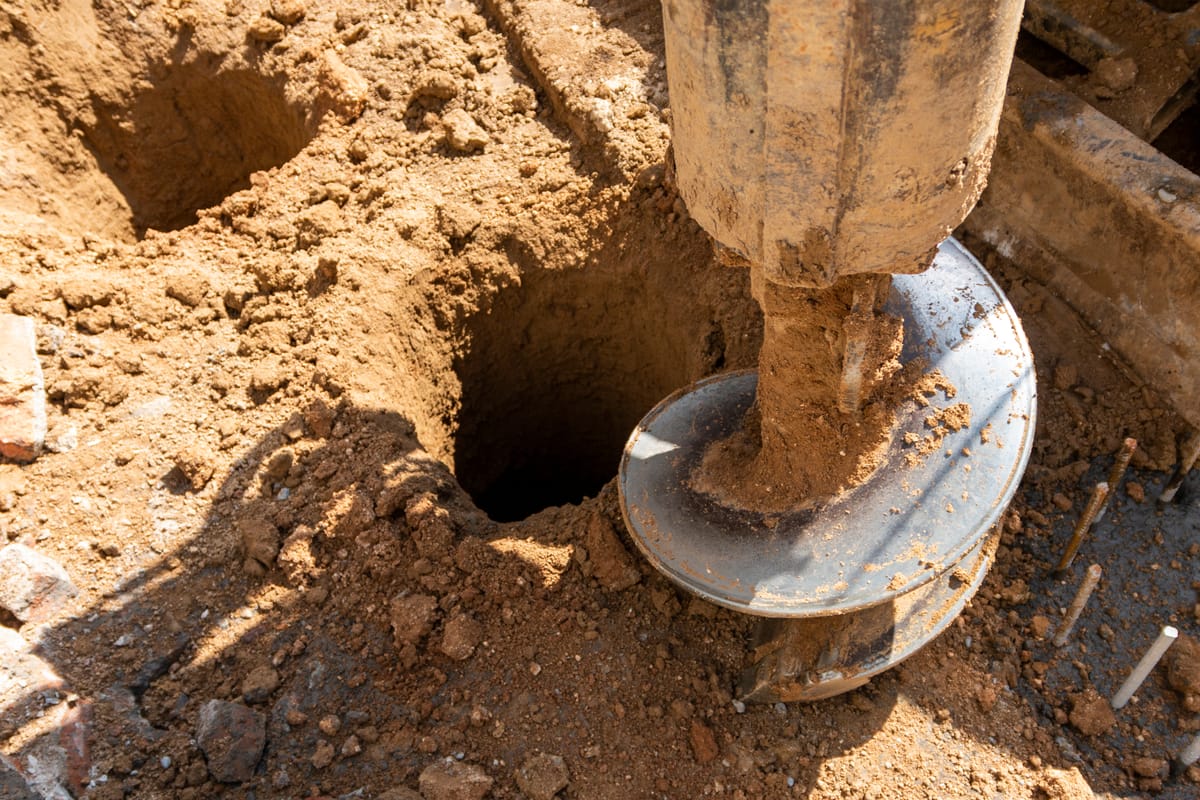
While most fence discussions focus on visible elements like posts and pickets, the true strength of your fence lies in what you can't see: the concrete footings. These hidden foundations are the most crucial element in ensuring you have a durable anchor for your fence, yet they're often the most misunderstood and neglected aspect of fence construction – simply because they're buried and forgotten the moment installation is complete.
This "out of sight, out of mind" reality has led to an industry-wide problem where many contractors quietly cut corners on this critical component. After all, who's going to look inside the post hole to check if it contains 50 pounds of concrete or 150? Who's going to measure if the hole is truly 24 inches deep with a proper 10-inch base? These are the details most homeowners don't see, but they're the very details that determine whether your fence will stand strong for decades or start failing within a few years.
The Science of Proper Footings
A proper concrete footing is an exercise in precision engineering. It's not just about the amount of concrete used – it's about the careful balance of depth, width, and soil conditions. Each element plays a vital role in creating a foundation that will stand the test of time.
Depth is crucial – we dig our post holes a minimum of 28-30 inches deep in most soil conditions. This isn't arbitrary; it ensures we reach below the frost line to prevent seasonal heaving and gets us down to stable soil layers. This depth also provides the necessary leverage against lateral forces and creates resistance to upward pressure during wet conditions.
Width is equally important, which is why we insist on a minimum 10-inch diameter at the base. We actually create a bell-shaped hole, wider at the bottom than the top, which dramatically enhances stability. This shape, combined with proper width, allows for complete concrete coverage around the post and creates a broader soil pressure distribution pattern that actively resists rotation.
Cutting Corners
The truth about fence installation is uncomfortable but simple: concrete is heavy, expensive, and time-consuming to work with. Many contractors respond to these challenges by taking shortcuts. A typical "quick install" approach uses around 50 pounds of concrete per post, often in holes that are only 18 inches deep with minimal diameter. This method is faster, requires less physical labor, and yields higher profit margins.
At first glance, the savings might seem attractive – $15-20 per post in materials and 2-3 hours saved per project. But these minor savings come at an enormous cost to the fence's longevity and stability.
Understanding the Forces at Play
A typical 6-foot privacy fence faces remarkable challenges. During a strong storm, a single panel can catch wind force equivalent to 800+ pounds of pressure. This isn't just pushing against your fence – it's creating a complex system of tension and compression that concentrates at the base of each post.
Add to this the constant static forces: the weight of the fence itself, tension from attached panels, gate movement, and accumulated debris. Then factor in dynamic forces like freeze-thaw cycles and soil erosion. A 50-pound concrete footer simply cannot provide adequate stability against these combined forces.
The Solid Approach
At Solid, we've developed our footing specifications based on real-world physics and decades of observed results. Every post we install sits in a minimum of 100 pounds of concrete – often up to 150 pounds for corner posts or gate supports. Our holes are precisely measured: minimum 24 inches deep, 10-inch diameter at the base, with a bell-shaped design for enhanced stability.
We properly prepare and compact the soil before pouring. We use fast-setting concrete to ensure optimal curing conditions. And we never, ever skimp on quantity. These aren't arbitrary choices – they're exactly what's needed to create a fence that will stand strong for decades.
The True Cost of Compromise
The concrete footing is the one component of your fence that can never be practically repaired or upgraded. When contractors cut corners here, they're not just saving money – they're compromising the entire structure from day one. While a fence with inadequate footings might look identical to a properly supported fence initially, the differences become clear as the seasons change. Posts begin to lean, gates drag against the ground, and the entire structure develops a telltale wave pattern, usually within 5-7 years.
In contrast, a properly installed footing will maintain its structural integrity for 40+ years. The initial investment might be higher, and the installation might take longer, but the long-term outcome is undeniable: a fence that stays true, gates that remain properly aligned, and posts that stand strong against whatever nature throws at them.
Built to Last
At Solid, we don't just meet minimum requirements – we aim to make it last. Every footing we pour is designed to outlast the fence it supports. Because when you're building something meant to last decades, there's no room for compromise.
Build it once. Build it right. Build it to last.

